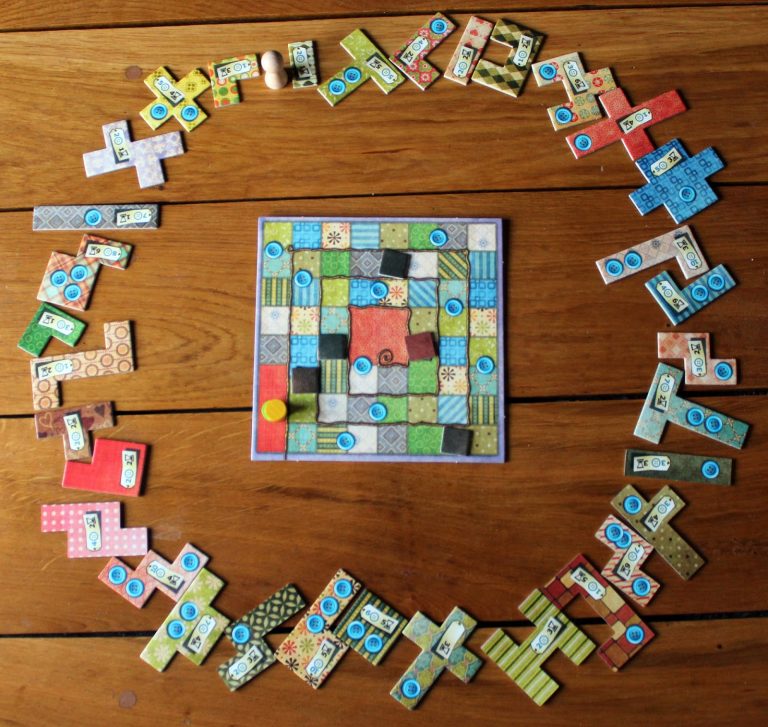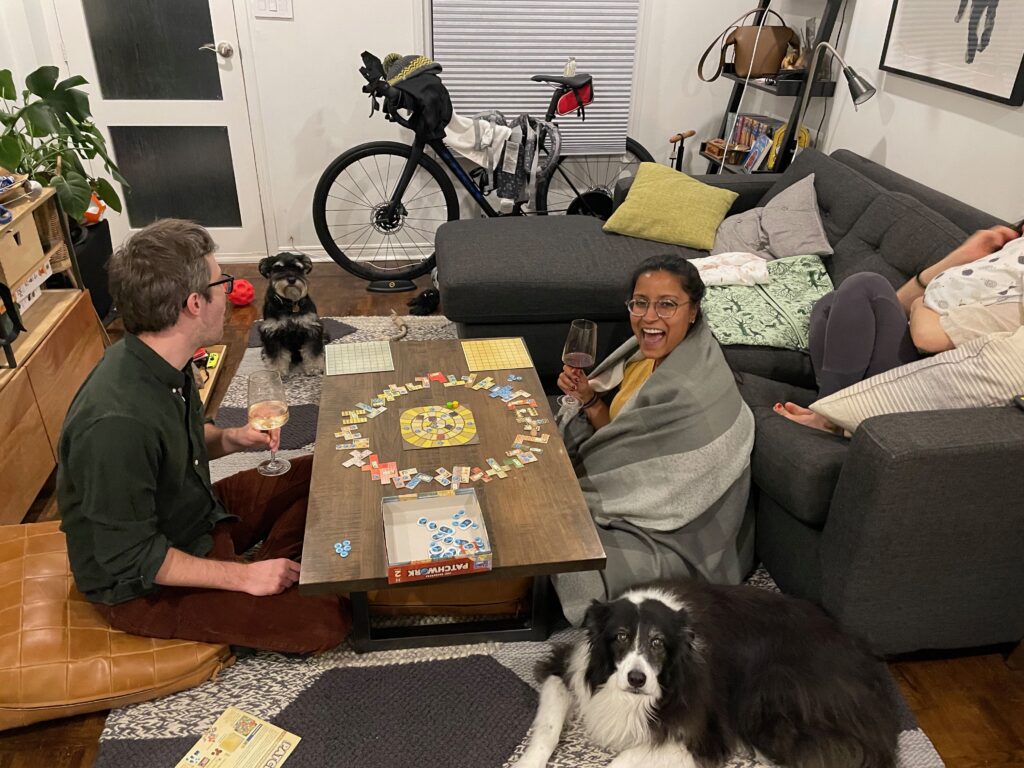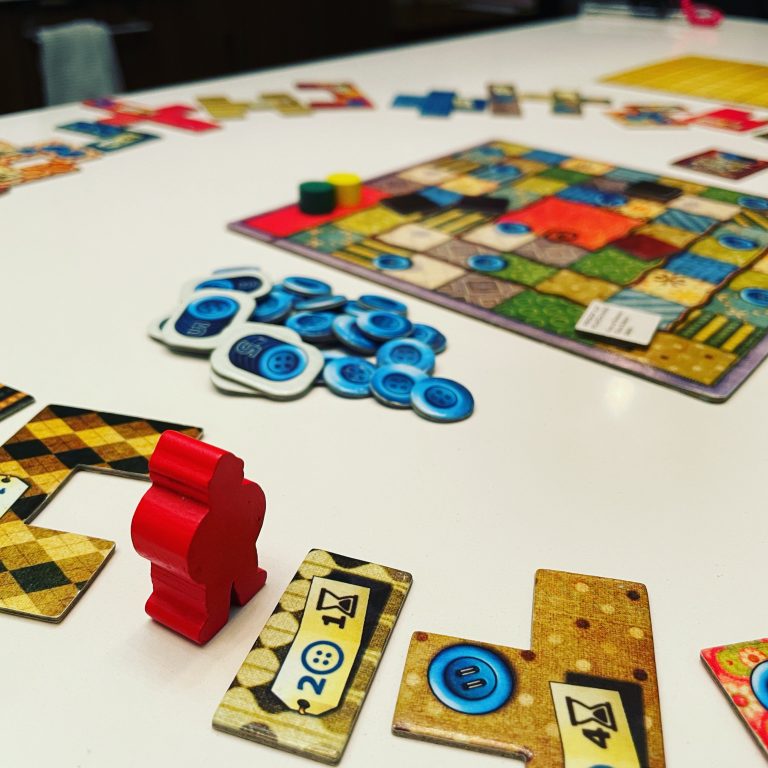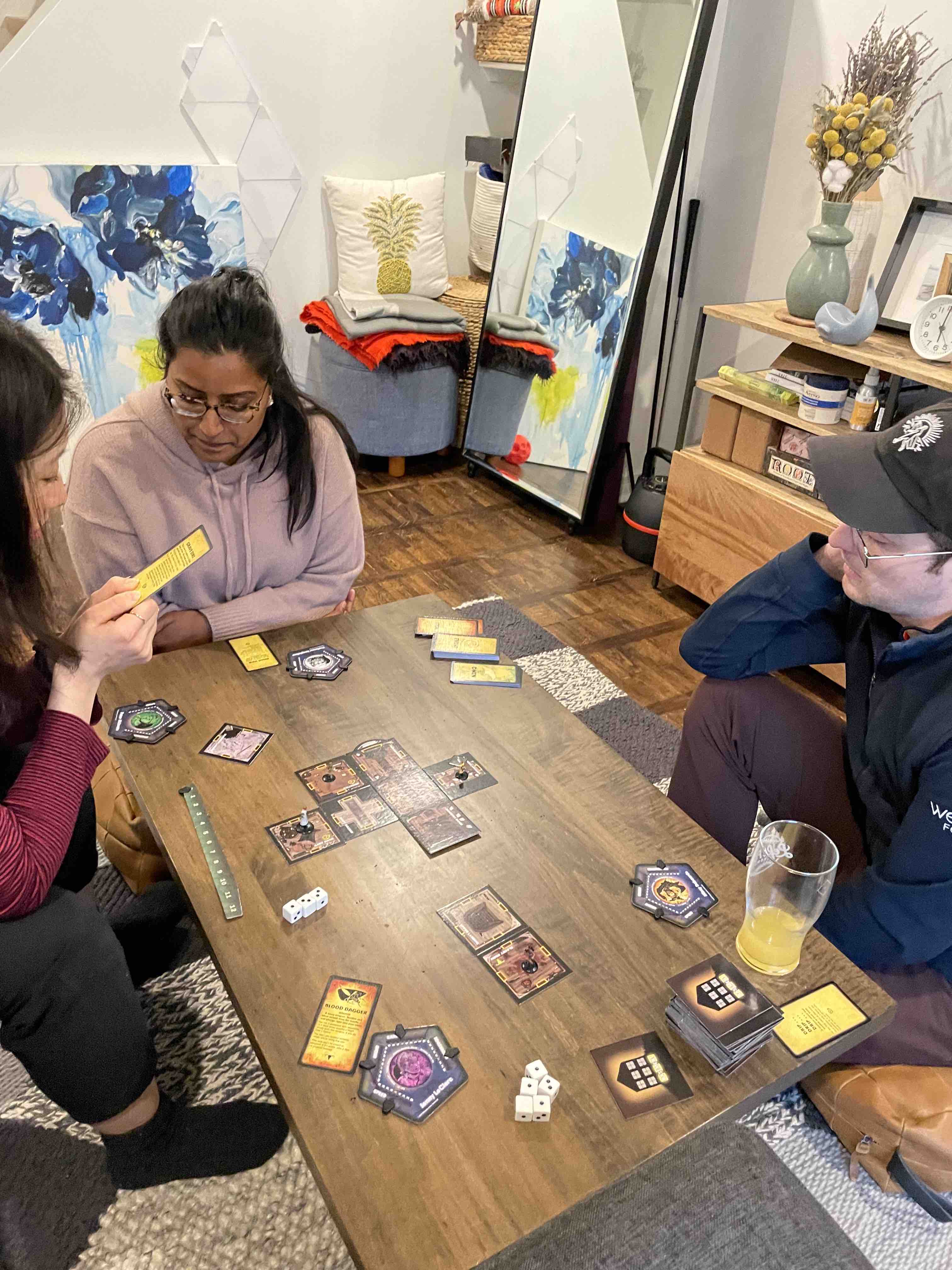If you’re looking for a competitive board game with simple rules, short playtime, that’s tailor-made for two people, and highly addictive, looking no further!
Patchwork is a relatively unknown two-player board game that’s easy to learn, relatively inexpensive, lasts about 30 minutes, and great for both kids and adults.
The objective of Patchwork, a textile-inspired board game, is to complete the highest-scoring “quilt” by purchasing and placing “patches” (essentially jigsaw pieces) on your personal 9 x 9 board, earning you buttons (or points).
So, what comes in the Patchwork box? Well, the board game consists of the following:
- Two 9 x 9 quilt boards and player meeples, one for each player
- One central time board (double-sided)
- 33 unique patches
- 1 position token
- 5 single patches
- One 7 x 7 bonus tile
- A whole bunch of button tiles
- Printed set of instructions
CAUTION: Because this board game has a lot of small pieces that are choking hazards, the suggested age for playing is 8 years old and up.
Setting up a game of Patchwork is very simple, and only takes a few minutes.
To setup the board game:
- Randomly arrange all 33 patches in a circular pattern around the time board.
- Place the single patches on their respective positions on the time board, along with the player meeples at the start position.
- The 7 x 7 bonus tile and the button tiles are placed next to the time board.
- Place the position token in the counter-clockwise position next to the smallest patch, in this case the 1 x 2 patch.
Each player takes a quilt board and starts with 5 buttons tiles in-hand.
And now you’re ready to play!

The rules for the Patchwork board game are very simple and easy to follow. However, there are a few unique and important details you need to know when playing.
The complete rules for Patchwork can be found here.
Overview
Players can carry out one of the following two actions:
- Action 1 – You can move your player meeple directly in-front of your opponents meeple. This earns you one button tile per space you had to move along the time board.
- Or Action 2 – If you can afford it, you can take, pay, and then place a patch.
But, when choosing a patch, you can only choose from the three patches directly clockwise from the patch position token.
A patch that has been purchased then must be placed before selecting your next patch.
The position token is then moved to the space where the patch was taken from.
Patch Information
Depicted on each patch is a little label. The label indicates how many buttons the patch costs as well as how many spaces you must move on the time board.
Also, each patch may or may not contain larger button symbols. These larger button symbols indicate how much button tiles you receive as “income” when you move across the button symbol on the time board. There are 9 income occurrences or “payouts” on the time board.
Some patches are free, some are expensive. Some patches cost you a lot of time, and some very little.
Player Turns
Players don’t necessarily alternate between turns. Instead, whoever’s player token is the furthest behind on the time board takes their turn.
This means, you can have multiple turns. And, if you land on top of your opponent, it’s still your turn.
Once you move in front of your opponent on the time board then it’s their turn.
Time-Board, Movement & Bonuses
Movement across a button symbol on the time board triggers a payout equal to the number of patch buttons on your quilt so far.
Additionally, the first player to cross a “single patch” piece on the time board immediately takes it and places it on their board. These single pieces are great for filling in gaps!
And if, at any point, you are the first player to fully complete a 7 x 7 portion of your quilt board, you are awarded the bonus tile, giving you 7 buttons for scoring purposes.
End of Game & Scoring
The game ends when both players reach the middle of the time board. Each player then counts the number of button tiles they have accrued and subtracts 2 points for every empty space on their quilt board.
That means negative scores are entirely, and most definitely, possible! The player with the highest score wins!

Even though patchwork is extremely simple, there’s actually a lot of strategy at play. It’s a constant battle to figure out if a patch is worth the price.
- Will it pay off in the long term?
- Should you skip your turn and opt to advance your meeple and receive buttons instead?
- And how exactly do you place your pieces efficiently to cover your quilt, yet allow space for some funky shaped tiles.
No two patches are the same, and no two games of Patchwork are the same either. This is why it’s such an engaging and addictive board game!
After you play this game once, you’ll forever be on a quest to beat your own high score.
Just to let you know, my wife’s high score is a whopping 37!
My Strategy
Personally, I sometimes start by placing my first few pieces in the center of my quilt board… Because I’m an agent of chaos!
It drives my wife crazy since she’s always super-organized and starts from a corner. She’s definitely way better at gauging when and what patches to buy.
But, the more you play, the more you’ll realize that the whole “time” aspect of the patches is super important, not just the initial cost or the payout potential.
Pro-tip: Try not to overspend on patches as you get closer to the center of the time board. Instead, try to purchase patches that cover large areas, at the lowest cost, and the least amount of time.
What’s your best score playing Patchwork? Let me know in the comments below!
This article contains affiliate links, which help support this blog at no cost to you!





